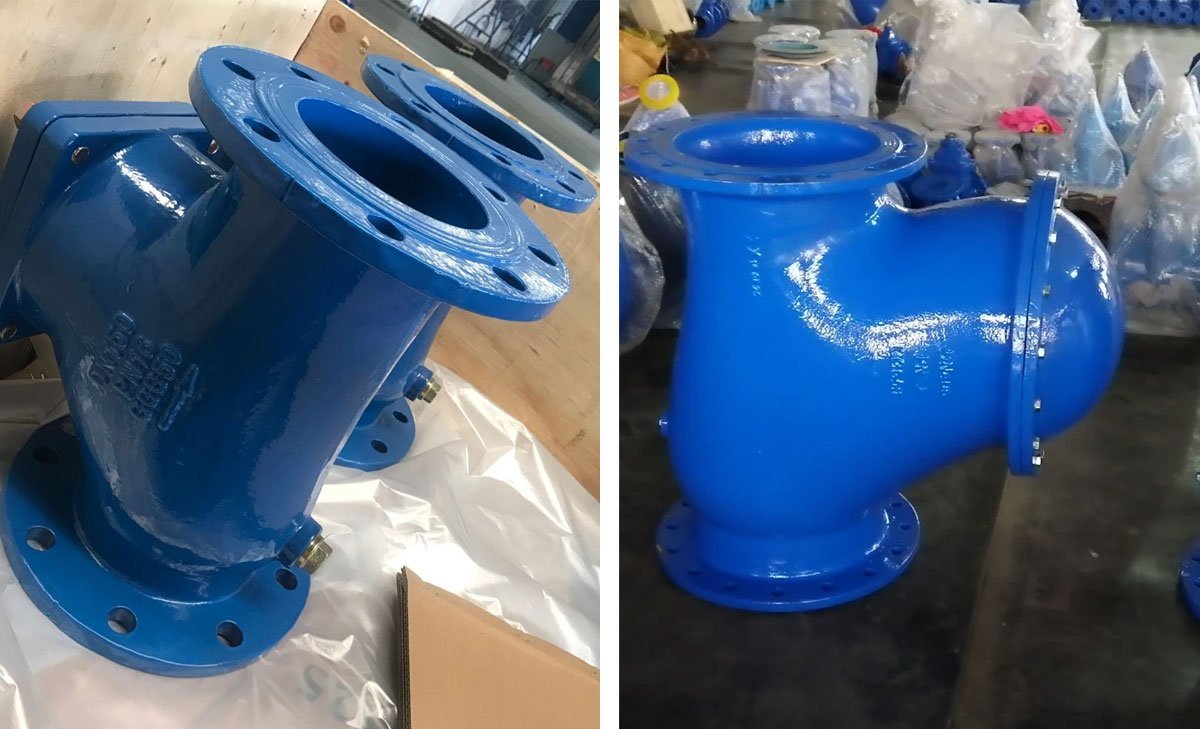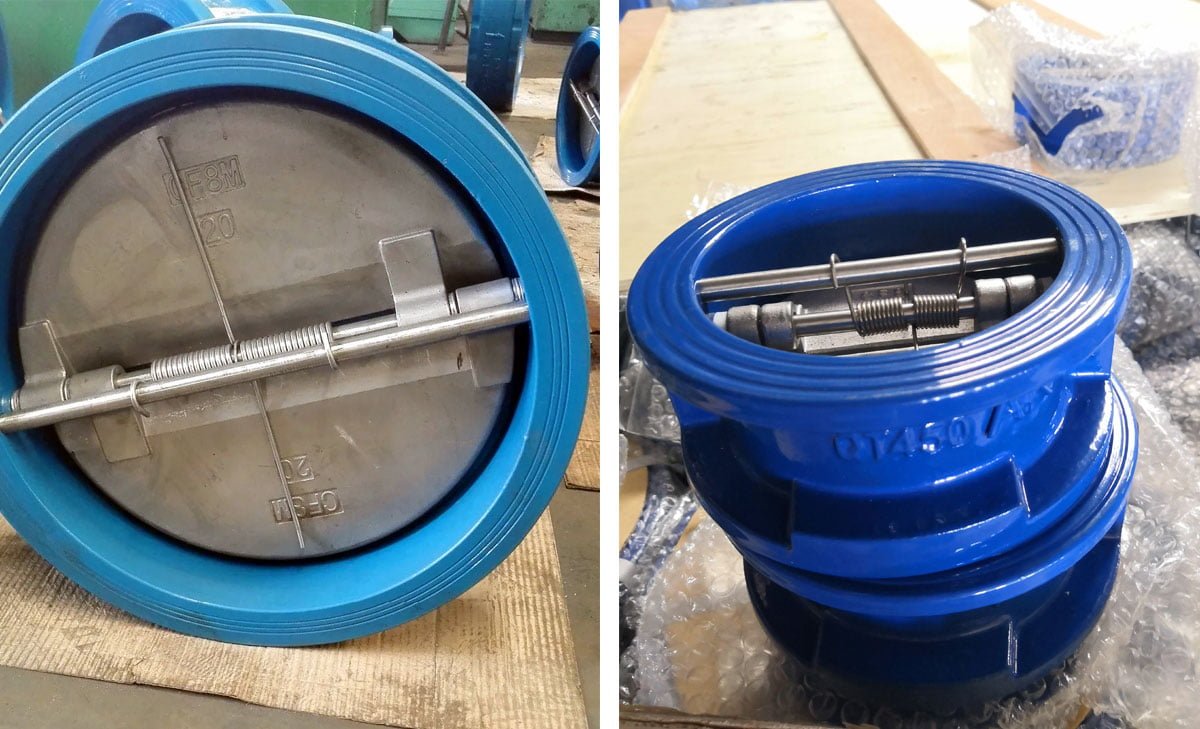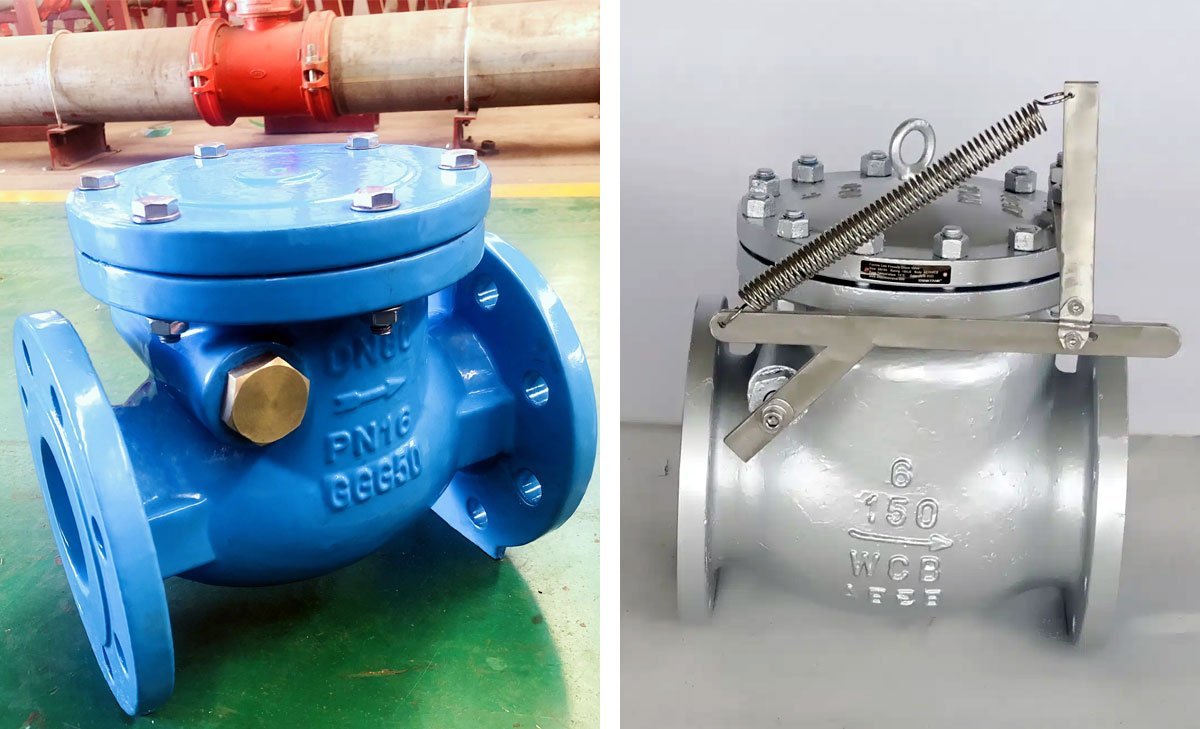The Durability and Longevity of Stainless Steel Check Valves in Water Infrastructure

Table of Contents
ToggleThe Corrosion Resistance of Stainless Steel Check Valves in Water Infrastructure
Stainless steel check valves play a crucial role in maintaining the integrity of water infrastructure systems. These valves are designed to withstand the demanding conditions of water and wastewater applications, providing long-lasting and durable performance. Understanding the construction, working mechanism, and materials of stainless steel check valves is essential for ensuring the efficiency and reliability of water distribution and treatment systems.
- Durability and Longevity of Stainless Steel Check Valves in Water Infrastructure:
- Stainless steel check valves are known for their exceptional durability in water infrastructure systems.
- The corrosion-resistant properties of stainless steel make it highly suitable for prolonged exposure to water and harsh environmental conditions.
- Stainless steel check valves are engineered to withstand high pressure and flow rates, ensuring long-term reliability in water distribution and treatment systems.
- With proper maintenance, stainless steel check valves can provide a long service life without compromising performance.
- The robust construction of stainless steel check valves minimizes the risk of leaks, ensuring the integrity of the water infrastructure over time.
- The non-corrosive nature of stainless steel helps prevent deterioration, making it a cost-effective choice for long-term water infrastructure investments.
The Role of Stainless Steel Check Valves in Water Infrastructure
Basics of Check Valves in Water Systems
Check valves are crucial components in water systems as they allow the flow of water in one direction while preventing backflow. This key function helps to maintain the efficiency and integrity of the entire water infrastructure. Check valves are particularly essential in preventing damage from water hammer, a hydraulic shock that occurs when the flow of water is suddenly obstructed.
Importance of Stainless Steel for Durability
The durability of check valves is of utmost importance in water infrastructure, and stainless steel has emerged as the material of choice for ensuring longevity and reliability. Stainless steel check valves are characterized by their resistance to corrosion, erosion, and high temperatures, making them ideal for the demanding conditions within water systems. Moreover, the inherent strength of stainless steel enables these valves to withstand the potential stress and pressure fluctuations that may occur within the infrastructure.
Stainless steel’s capability to withstand burstiness and perplexity within water systems makes it an unparalleled choice for ensuring the long-term functionality of check valves. The material’s resistance to corrosion and erosion can be likened to a shield that protects the valves from the relentless forces present in water infrastructure, ensuring their unwavering performance even in the face of environmental challenges.
How Stainless Steel Check Valves Work
The Mechanism of Swing Check Valves
Stainless steel check valves operate using a variety of mechanisms, including the swing check valve design. This type of check valve has a hinged disc that swings open to allow flow in one direction and automatically closes to prevent backflow. When the flow stops, gravity forces the disc back into a seating to create a seal, preventing the reversal of the flow. This mechanism ensures the unidirectional flow of fluids, making it an essential component in various water infrastructure systems.
Cracking Pressure and Its Significance
A crucial parameter in understanding the functionality of stainless steel check valves is the cracking pressure. This refers to the minimum upstream pressure required to open the valve and allow the media to pass through. Once the pressure exceeds this threshold, the valve opens, enabling the flow of fluids. The cracking pressure is a fundamental aspect that ensures the check valve operates effectively within specified pressure differentials. Different valve designs and sizes have varying cracking pressures, so selecting the appropriate valve with the right cracking pressure is essential for optimal performance.
In summary, the mechanism of swing check valves and the significance of cracking pressure are essential elements that contribute to the efficient operation of stainless steel check valves in water infrastructure systems. Understanding these factors is crucial for proper selection, installation, and maintenance of check valves to ensure the durability and longevity of water distribution and control systems.
Types of Stainless Steel Swing Check Valves
Swing check valves play a crucial role in preventing backflow and ensuring the smooth operation of water infrastructure systems. In this section, we’ll delve into the distinctions between top-hinged and tilting disc valves, explore their operational differences, and discuss their varied applications.
Distinction Between Top-Hinged and Tilting Disc Valves
Top-Hinged Valves: These valves feature a hinged disc that swings open when the flow is in the right direction. As the flow reverses, gravity and backflow force the disc to close, creating a secure seal. They are particularly suited for horizontal applications and are effective in systems with consistent media flow.
Tilting Disc Valves: Unlike top-hinged valves, tilting disc valves use a disc that tilts to allow forward flow and closes to prevent backflow. Their design makes them suitable for preventing fluid backflow in various orientations, including both horizontal and vertical installations.
Operational Differences and Applications
Operational Differences: Top-hinged valves rely on gravity and backflow to close the disc, while tilting disc valves utilize the disc’s tilting action to control the flow. This results in top-hinged valves being more ideal for applications with steady and consistent flow, whereas tilting disc valves offer versatility in managing flow in different orientations.
Applications: Top-hinged valves are well-suited for high-flow and horizontal setups, while tilting disc valves are more adaptable and can effectively function in both horizontal and vertical positions. Each type of valve is engineered to address specific flow control requirements, ensuring optimal performance and reliability in diverse water infrastructure systems.
Advantages of Stainless Steel in Check Valves
Stainless steel check valves offer a range of advantages that make them a reliable choice for water infrastructure systems. Their exceptional corrosion resistance, long-term performance, and reliability make them essential components in ensuring the durability and longevity of water infrastructure.
Corrosion Resistance in Various Environments
Stainless steel possesses an innate resistance to corrosion, making it an ideal material for check valves in water infrastructure. The chromium content in stainless steel forms a protective oxide layer on the surface, safeguarding it from rust and corrosion even in harsh and corrosive environments. This corrosion resistance ensures that stainless steel check valves maintain their structural integrity, providing long-term functionality in diverse water conditions. Whether exposed to seawater, underground installations, or industrial settings, stainless steel check valves demonstrate remarkable resistance to corrosion, extending their service life and reducing the need for frequent replacements.
Long-Term Performance and Reliability
In water infrastructure systems, the long-term performance and reliability of check valves are paramount. Stainless steel check valves excel in this aspect, offering durable performance over extended periods. Their robust construction and resistance to wear and tear contribute to their longevity, minimizing the risk of failure and ensuring consistent functionality over the years. Stainless steel check valves are designed to withstand fluctuating pressures, high flow rates, and challenging operating conditions, making them a dependable choice for maintaining the integrity and efficiency of water infrastructure systems. Their ability to deliver sustained performance without compromising on functionality positions stainless steel check valves as essential components for ensuring the steady operation of water conveyance and control systems.
In conclusion, the corrosion resistance and long-term performance of stainless steel check valves make them invaluable assets in water infrastructure. Their ability to withstand challenging environments and deliver consistent reliability establishes them as a cornerstone of durable and long-lasting water conveyance and control systems.
Factors Influencing the Longevity of Stainless Steel Check Valves
When considering the longevity of stainless steel check valves in water infrastructure, several key factors come into play. These factors directly impact their lifespan, reliability, and overall performance. Understanding and managing these influences can significantly enhance the durability and effectiveness of the check valves. In this section, we will delve into two critical factors that can affect the longevity of stainless steel check valves: the impact of flow rates on valve lifespan and the effects of water hammer on valve integrity.
Impact of Flow Rates on Valve Lifespan
The flow rate of water passing through stainless steel check valves can have a direct impact on their lifespan and operational efficiency. Higher flow rates can subject the valves to increased stress and wear, potentially reducing their longevity. Conversely, lower flow rates might lead to issues such as sediment accumulation and ineffective sealing. It’s essential to strike a balance by selecting check valves designed to withstand the specific flow rates within the water infrastructure.
Managing flow rates is crucial for optimizing the performance and durability of stainless steel check valves. Properly matched valves can effectively handle the expected flow conditions, promoting extended service life and reliable operation within the water infrastructure.
Water Hammer and Its Effects on Valve Integrity
Another significant factor influencing the longevity of stainless steel check valves is water hammer. Water hammer occurs when the flow of water is suddenly halted or redirected within the piping system, generating a pressure surge or shock wave. This phenomenon can exert substantial force on the check valves, potentially leading to structural damage, premature wear, or failure.
To mitigate the effects of water hammer, engineers and implementers must consider the selection and installation of appropriate check valve designs that can withstand the potential pressure transients. Implementing measures such as surge tanks, pressure relief valves, and appropriate valve placement can help attenuate water hammer effects, safeguarding the integrity and longevity of stainless steel check valves in water infrastructure applications.
Understanding and addressing the impact of flow rates and water hammer on stainless steel check valves are vital steps toward ensuring their optimal longevity and reliable performance within water infrastructure systems. By carefully managing these factors, stakeholders can enhance the durability and effectiveness of these critical components, contributing to the overall resilience and efficiency of the water distribution network.
Maintenance and Care for Stainless Steel Check Valves
Check valves play a critical role in maintaining the seamless flow of fluids through a piping system, and it is imperative to ensure that these components are well-maintained to guarantee their longevity and effectiveness. By adhering to routine inspection and cleaning, check valves can be kept in optimal condition, and when necessary, replacement and repair strategies can be implemented to address any issues.
Routine Inspection and Cleaning
Regular inspection and cleaning are vital for the proper functioning of stainless steel check valves. Here are essential steps to ensure their maintenance:
Keep it clean: Regularly wipe off dust and dirt from the valve using a towel, and utilize a wire brush to remove any accumulated debris that may impede the valve’s performance.
Stay alert: Periodically check the valves for any signs of corrosion, rust, or mineral buildup. Additionally, ensure that the valves are opening and closing smoothly, and assess the pressure and temperature of the fluid passing through.
Thorough cleaning: If necessary, remove the valve for a comprehensive inspection. Clean all components using appropriate cleaning agents, and inspect the housing for any corrosion or damage that may affect the valve’s functionality. Polishing rough surfaces can aid in maintaining the valve’s integrity.
Replacement and Repair Strategies
In cases where routine maintenance is insufficient to rectify issues with stainless steel check valves, it is essential to be aware of the replacement and repair strategies that can be employed:
Identify issues: Promptly address any signs of significant leakage, worn-out or damaged parts, and valves that are stuck in an open or closed position.
Thorough assessment: If the valve exhibits signs of significant wear or damage, consider replacing it to ensure the integrity of the system. Additionally, assess the overall condition of the valve and determine the need for repairs or replacements.
Proper lubrication: Regularly lubricate the valves to enhance their operational efficiency and longevity. Utilize suitable lubricants and ensure proper application to minimize wear and tear on the valves.
Remember, the proper maintenance and care of stainless steel check valves are essential for preserving the integrity of water infrastructure systems and ensuring the uninterrupted flow of fluids. By adhering to these maintenance practices and being prepared with appropriate replacement and repair strategies, the durability and longevity of stainless steel check valves can be upheld, contributing to the overall efficiency and reliability of water infrastructure.
Selecting the Right Stainless Steel Check Valve
Before choosing a stainless steel check valve for water infrastructure needs, it’s crucial to consider specific requirements and applications. Here’s a detailed insight into essential considerations for selecting the right valve type:
Considerations for Water Infrastructure Needs
When selecting a stainless steel check valve for water infrastructure, it’s essential to consider the following factors:
- Flow rate: Determine the flow rate of the water in the application to select a check valve that can handle the specific flow requirements.
- Pressure rating: Evaluate the pressure rating of the water system to ensure the check valve can withstand the operating pressure without any issues.
- Corrosion resistance: Given the exposure to water, it’s important to choose a stainless steel check valve with high corrosion resistance to ensure longevity and durability.
- Maintenance requirements: Consider the accessibility and ease of maintenance, as this can impact the overall lifecycle cost of the valve.
Matching Valve Type to Specific Applications
Matching the right valve type to specific applications is crucial for optimal performance and longevity. Here are key points to consider:
- Vertical lift type: Ideal for installation on horizontal pipes with a nominal diameter of 50mm, while straight-through type is suitable for both horizontal and vertical pipes.
- Lift-type rotary type: With good sealing performance and large fluid resistance, it’s best suited for horizontal pipelines (horizontal valve) and vertical pipelines (vertical valve).
- Butterfly check valve: Butterfly valve can be installed on horizontal, vertical, or inclined pipelines, offering versatility for various applications.
- Diaphragm check valve: Suitable for low-pressure and normal temperature pipelines, especially for water systems prone to water hammer occurrences.
- Ball check valve: Mainly suitable for medium and low-pressure pipelines, especially in large diameter applications.
By matching the specific valve type to the application, water infrastructure systems can benefit from enhanced efficiency and reliability.
FAQ for Stainless Steel Check Valves
What is the typical lifespan of stainless steel check valves?
Stainless steel check valves are known for their longevity and can typically last for 10 to 20 years, depending on factors such as the specific application, maintenance, and operating conditions.
What are the benefits of using stainless steel check valves?
Stainless steel check valves offer superior corrosion resistance, making them ideal for applications where harsh or corrosive fluids are present. They are also highly durable and can withstand high temperatures and pressure, ensuring reliable performance over an extended period.
Are there any drawbacks to using stainless steel check valves?
While stainless steel check valves are highly durable and resistant to corrosion, they can be more expensive than other materials. Additionally, the high melting point of stainless steel can limit its use in welding and construction applications.
How do stainless steel check valves compare to other types of valves in terms of durability?
Stainless steel check valves are among the most durable options available, particularly when compared to other materials such as brass or PVC. Their resistance to corrosion, high temperatures, and pressure makes them a reliable choice for long-term use in various industrial and commercial settings.
Conclusion
In conclusion, understanding the durability and longevity of stainless steel check valves in water infrastructure is crucial for ensuring reliable and efficient operations. Stainless steel check valves offer exceptional resistance to corrosion, erosion, and chemical damage, making them ideal for prolonged use in water and wastewater applications. Their robust construction and high tensile strength contribute to extended service life, reducing maintenance needs and operational downtime. With proper installation and maintenance, stainless steel check valves can provide long-term performance and contribute to the overall sustainability of water infrastructure systems.













